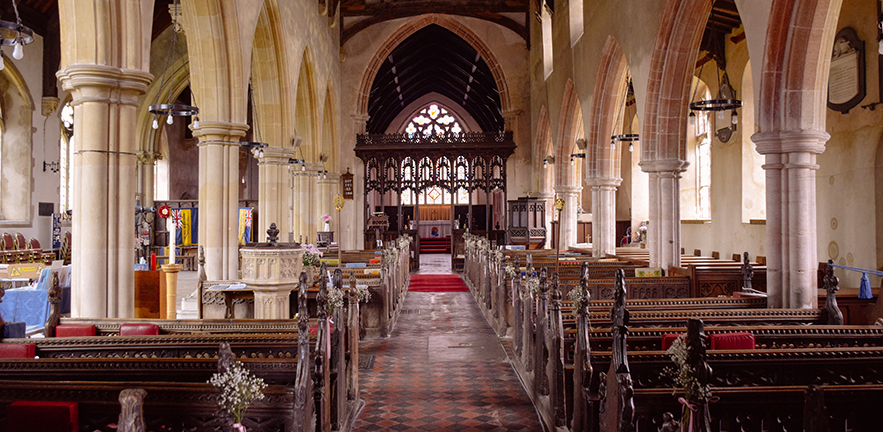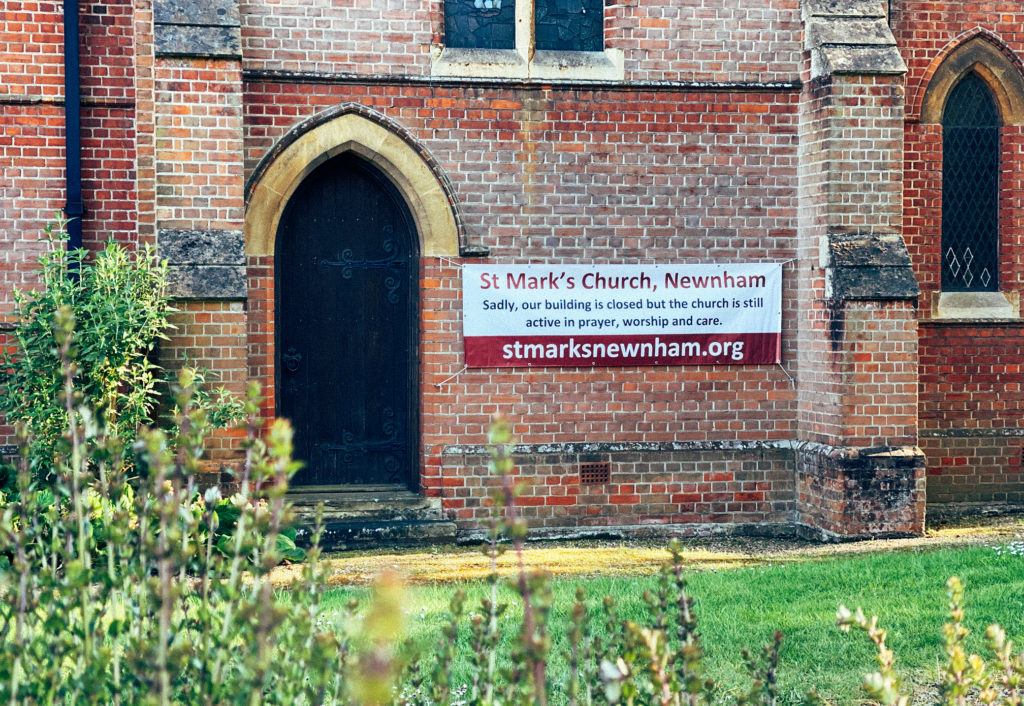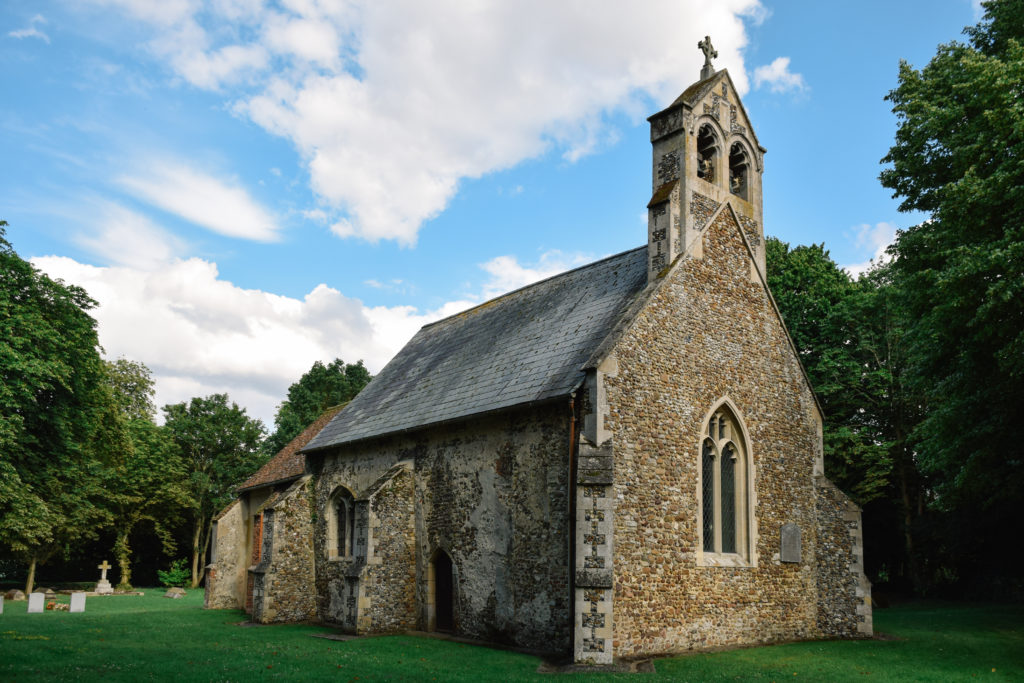Written by Dr Timur Alexandrov.

Churches in the time of a modern pandemic
For the first time in modern history, places of worship including churches are closed. As the lockdown continues in the UK, we cannot help but notice the silent local churches. As we take our daily exercise allowance, we have all seen that the traditional boards proclaiming ‘church is open’ are gone, and the doors are locked. The arrival of COVID-19 has caused a great many difficulties on both a national and an individual level. What makes matters more painful, and difficult to process, is that the social-distancing rule prescribes now that only immediate family can attend the funeral of a loved one. In recent weeks, the Church of England has been encouraging families to discuss with clergy the possibility of a memorial service once the lockdown has been lifted, enabling more people to gather.
If only we could step inside our churches
Why are the churches closed when they are most needed at the times like this? People seek comfort in these troubling times and the importance of being able to go to church has been reported. In March, internet search trends for “online church” has shown about a 400% increase worldwide (The Economist, 4 April 2020). A photograph shared by the press of a praying woman at the closed doors of Westminster Cathedral in London is a sad reminder of the current situation.
While the message from churches is clear – they understand the dangerous risks of large gatherings at the time of coronavirus pandemic – suffering members of the public did not share this point. Letters to editors, opinion features, and myriads of Tweets expressed concerns that locking the public out of “their churches” and not allowing clergy to film or stream sermons in churches was going too far. Some voiced concerns that being physically present in a place of worship is essential for many, and that the beauty of sacred spaces can nourish souls. It is also true that many physically fragile parish churches may face far higher repair bills in the future if left locked and without regular maintenance; and closed churches at Easter – a time that traditionally brings people together – could have caused damage to social capital in communities.

Setting an example
Holy week, the holiest on the Christian calendar, and the long Easter weekend that follows are usually the busiest time for churches when they are packed with observant Anglicans and have a lot to offer to their parishioners. This Easter, the Supreme Governor of the Church of England, Her Majesty the Queen, highlighted in her public address that Easter “isn’t cancelled; indeed, we need Easter as much as ever”. By being closed, churches were setting an essential example of the necessity to stay by socially. The Easter sermon of the Archbishop of Canterbury was delivered from his kitchen with a makeshift altar set up on the table.
Virtual church
While many parish churches have been struggling to reach wider audiences, the lockdown has forced clergy to reset their relationship with their communities. Historically, as an institution of civil society, the church is usually the first to respond at the time of crisis. Today, the church mission remains unchanged, but its’ methods of connection had to be adapted as quickly as possible, and the Coronavirus crisis has been seen by many as an opportunity to explore new ways of reconnecting. One of which involved delivering services online.
Indeed, virtual reality cannot facilitate in full the essential and tangible interactions that occur within the physical church space; nevertheless, technology makes it possible for church to come to households and families. Texting, messaging, emailing, video conferencing, and social media channels have become some of the ways to reconnect and share holy communion. Advice on the Church of England’s website states that church is not defined by the building but by being together.
International examples demonstrate the revival of drive-in sermons in the US, Easter egg hunt games online, photography sharing, and video conferencing with parishioners. For some tech-savvy churches in England, the lockdown is another opportunity to make use of technology, for other churches this is a novel way. One of the churches which features in the REACH Ely research, St Peter’s in Yaxley, was one of the first to use technology to support its community. St Peter’s vicar recorded a video encouraging people to keep in touch and communicate through different media; she invited them to join in candle lighting and pray, and shared stories about her the paintings on the walls of her home. Like many other churches in the UK, St Peter’s live streams its Sunday morning services.
The vicar of Newnham and Grantchester, in Cambridge, has been experimenting with sermon livestreaming and music sharing options online. The children in the community are not being left out – a Children and Families Minister of Newnham church has been recording herself telling Godly Play stories, has made Messy Church in a Bag kits which she has been delivering to families who request them, and has been organising Youth Group meetings online.

Several churches, like one in Bath, have transformed their spaces into makeshift factories making masks for NHS workers. Many church communities consolidated to launch crowdfunding fundraisers to care for the most vulnerable in their communities including those who are self-isolating. For many people, a church website has become a primary resource to share advice and support on coping with Covid-19. “We have noticed an increased use of our website – so our efforts appear to be meeting a need”, says Alan Draper, a churchwarden of St John’s in Somersham, another church which features in our research. St John’s has joined hundreds of other churches in England to share weekly sheets, virtual services, morning prayers and reflections online. However, it is understood that not everybody has access to the internet, or feels comfortable participating in group video conferences, so churches deliver printable news sheets and advice by post.
Stronger together
In this troubling and uncertain time, it is encouraging to note that a silver lining is the sense of community that is growing stronger each day; communities are finding different ways of coming together and making sure their neighbours are all supported and cared for. In Feltwell, a village support group was formed at the start of the lockdown and the church rector is on the organising committee. Members of the church community are volunteering to be contacts for those in need and are in regular telephone contact with each other. St Mary’s Feltwell updates its Facebook page and posts daily thoughts, prayers, and meditations.

Small villages with no public amenities apart from the parish church, such as Carlton in Cambridgeshire, benefit from having a small tight-knit community. Stephen Roberts, the parish council chair who also volunteers as a churchwarden at St Peter Carlton, had already been communicating with a large number of residents by email, which he continues to do since the lockdown. “I’m very pleased to say that other residents within the community have added to this facility by means of introducing other forms of social media to many of us. We now have a WhatsApp group within the community as well as a newly constructed Facebook page for the village.”
Self-isolating and other vulnerable residents are able to request assistance with obtaining shopping and medical supplies, and these are always being picked up by other residents. It is also allowing social discourse and helping to combat loneliness which is highly important for those in the community living alone. Additionally, Carlton residents continue to phone one another regularly, attempting to be supportive to others during the stressful time.
Post pandemic
This is the first time in a century the UK is tackling a pandemic of this scale. It may seem that the lockdown has meant that work to achieve the goal of making churches more fit and welcoming to a wider community has stalled. However, this moment of pause is enabling churches to reflect on the things that matter most to them and their communities. Eventually, the coronavirus will retreat and the whole country will get into the ‘re-imagining’ mode. The post-crisis period for churches is an opportunity to relaunch their plans of reconnecting with communities. The ability to reconnect successfully with communities and a wider population depends on how well churches adapt to the lockdown. The time to reimagine churches is now.
The Social Ideas Podcast: old churches, new spaces
Cambridgeshire in the UK is home to more than three hundred churches, the majority of which are hundreds of years old; and, in this episode of The Social Ideas Podcast, we hear from the team involved with the REACH Ely project.
The three-year project aims to help communities make fuller use of their historic churches, going beyond a just being a place of worship and becoming a space for the wider community.
The Cambridge Centre for Social Innovation and the Diocese of Ely are working together to determine community values, needs and opportunities to ensure a win-win outcome for communities and sustainable future of historic church buildings.
You can find out more about the research here – https://www.jbs.cam.ac.uk/faculty-research/centres/social-innovation/reach-ely/


Mrs Sheila Dodds
I am a mature student training to be a minister in the Congregational church and am in my 4th and final year, is there a way that i can print or get hold of a copy of the article on the website about how churches are coping during the pandemic?
Pam Mungroo
Dear Mrs Dodds, in order to print the blog, it’s best to go to ‘file’ on your internet browser, and select print.
Please feel free to contact us should you need to – [email protected].
Best wishes – pam
Diana
If you’re looking for a new church, Check out this site https://www.gracelifetriad.com, Know God’s purpose in your life. He surely has a plan for everyone!